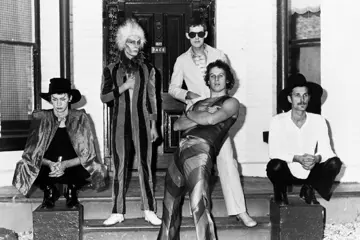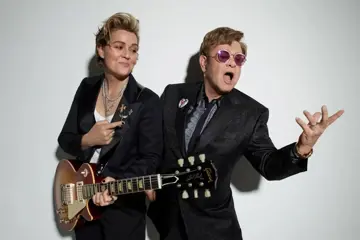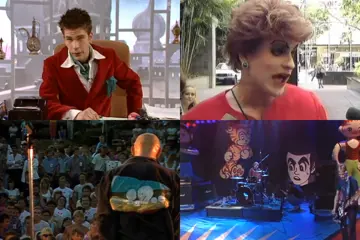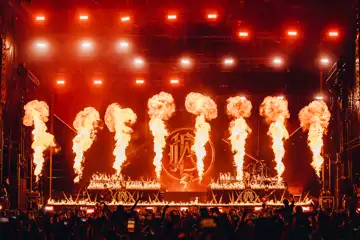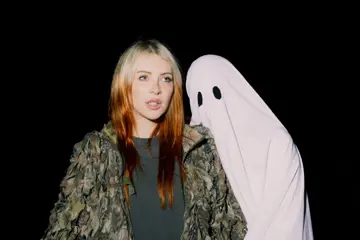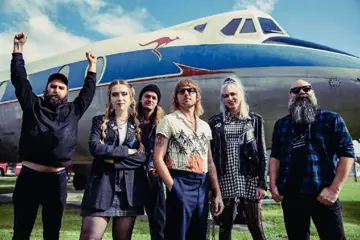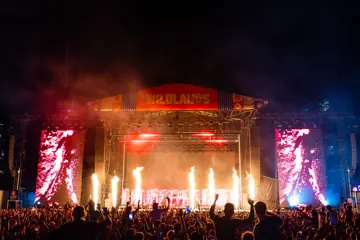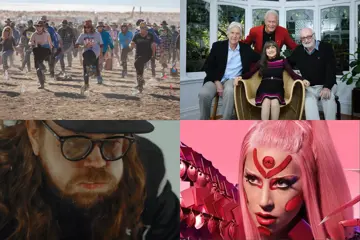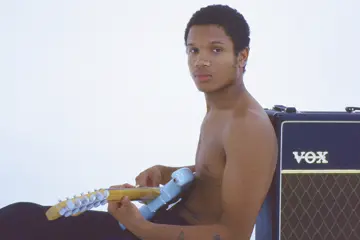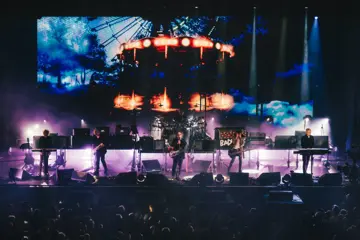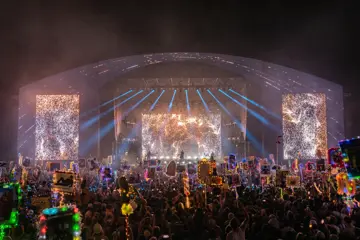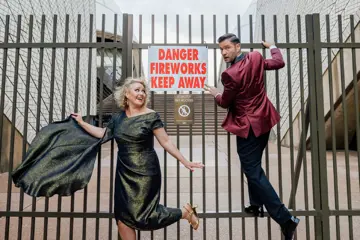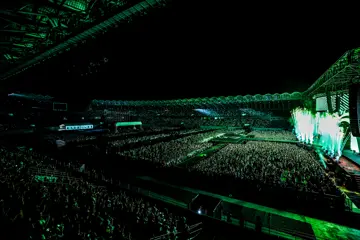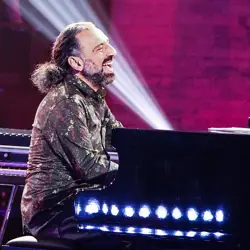 Stefano Bollani
Stefano BollaniWatching Stefano Bollani and Hamilton de Holanda perform together is akin to experiencing pure alchemy in action. Matter alters in state and Hamer Hall fades away as soon as the duo immerse themselves in their music, extending their senses and bodies in their individual instruments and compositions.
Italian Bollani — a human Gumby on steroids — is as much a joy to watch as he is to listen to. Lithe and nimble, his whole body dances as he tinkles the grand Steinway. His white sneakers dance in opposite directions, often splaying wide and running away from under him until he is chin-height to the keys. Tossing his graying ponytail repeatedly and making exaggerated but not insincere facial responses to Holanda’s notes, he draws awed giggles from the audience — a large chunk of whom perhaps already know that Bollani does anything but straight-laced and stuffy jazz.
In contrast, the reserved Hamilton de Holanda — sitting on a tall stool a few feet away and cradling his custom-made Bandolim (ten-stringed mandolin) — rarely leaves his perch but keeps his senses fully attuned to the slightest intonation by Bollani. Noting in the post-show interview the pair later holds with Gerry Koster, de Holanda explains haltingly that he first modified his mandolin from the original four pairs of strings “because I wanted to play the melody like a guitar or the oud, not just (play) the counterpoint… The mandolin found me,” he adds emphatically. A gift from his a grandparent, de Holanda started playing it from the age of five with the rapid, lively Brazilian choro, a form of Brazilian folk music being his early influence. Folding shades of African rhythm into a host of other genres such as the polka, waltz and habanera, the pace of the choro is the perfect complement to Bollani’s own background influences of ragtime and Oscar Peterson, albeit the speed of the former was a serendipitous accident as a result of the young Bollani accidentally playing the vinyl records at 45rpm instead of 33 until his father corrected him.
We struggle to comprehend that the duo hardly ever rehearses, or even uses a setlist. “We have a lot of songs we know, yes, but we play whatever we feel like onstage — what we feel like at that time,” Bollani explains. How long does the pair work on their collaborations — weeks, months? Bollani shoots the equally dumbfounded de Holanda a look.
“Nada, nada,” he shakes his head.
“Like this,” de Holanda snaps his fingers up in the air.
Don't miss a beat with our FREE daily newsletter
“We never talk about our music, or what we are going to play,” Bollani continues. “We talk about other music — music we like, because we are musicians. He always listens to what I play, and he always responds.”
Drawing several numbers from their last collaborative album, O Que Sera, the two leap gracefully from the folk-inspired Beatriz to the syncopated strains of IL Barbone Di Siviglia. Mirko Guerrini, a saxophonist, former band member and childhood friend of Bollani who now calls Melbourne home, joins the duo onstage to lend additional depth and texture for two numbers, notably the titular track of the album. He leaves too soon but Bollani and de Holanda soon pick up the energy for the second half of the evening to end one of the Melbourne Jazz Festival’s highlights with a magnificent flourish.

